Programmable hardware TOTP token in a card format that fits any authentication system
Classic hardware TOTP token with SHA-1 algorithm support
Programmable hardware TOTP token in a key fob format that fits any authentication system
Classic hardware TOTP token with SHA-256 algorithm support
Programmable hardware TOTP token in a card format that fits any authentication system
Classic hardware TOTP token with SHA-1 algorithm support
Programmable hardware TOTP token in a key fob format that fits any authentication system
Classic hardware TOTP token with SHA-256 algorithm support
A free 2FA authenticator app with cloud backup, easy token transfer to a new phone, PIN and biometric authentication protection
Free OTP delivery with chatbots in messaging apps
Delivery of one-time passwords via SMS messages
Free delivery of one-time passwords via email
Free one-time passwords delivery via push notifications
A free 2FA authenticator app with cloud backup, easy token transfer to a new phone, PIN and biometric authentication protection
Free OTP delivery with chatbots in messaging apps
Delivery of one-time passwords via SMS messages
Free delivery of one-time passwords via email
Free one-time passwords delivery via push notifications
Guides
This guide describes how to set up two-factor authentication (2FA) for your SonicWall VPN solution with Protectimus as a multi-factor authentication (MFA) provider.
The Protectimus two-factor authentication system can be integrated with SonicWall SSL VPN via RADIUS authentication protocol. For this purpose, you need to install an on-premise Protectimus RADIUS Server component and configure the SonicWall Network Security Appliance to refer to the Protectimus RADIUS Server for user authentication.
See how Protectimus two-factor authentication solution works for SonicWall VPN in the scheme below.
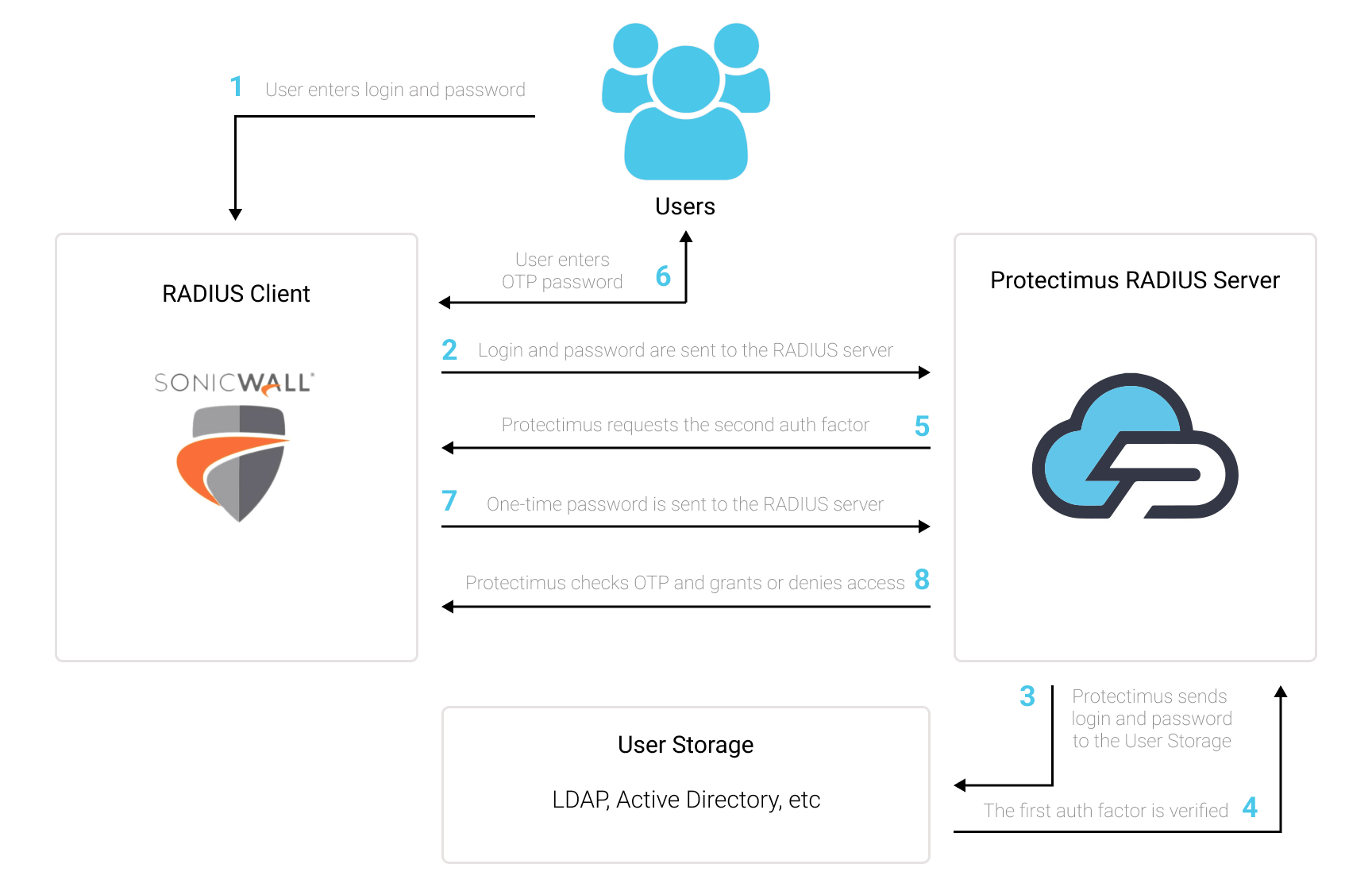
Protectimus adds the second authentication factor to your users’ login to the SonicWall VPN. After you set up SonicWall VPN two-factor authentication, your users will enter two different authentication factors when they log into their SonicWall VPN accounts. These authentication factors are:
Protectimus offers different kinds of two-factor authentication tokens for SonicWall:
You may enable one authentication method for all your users or let users a chance to choose themselves if you activate the Protectimus Users’ Self-Service Portal.
Two-factor authentication protects SonicWall VPN from many threats associated with stealing users’ credentials, including phishing, social engineering, brute force, keyloggers, data spoofing, etc.
It is a challenging task for the fraudster to hack two authentication factors that differ in their nature (something the user knows and owns) and use them simultaneously within 30 seconds (the time when the one-time password remains active). That is why two-factor authentication is still one of the best security measures for SonicWall VPN.
You can set up SonicWall VPN two-factor authentication (2FA) with Protectimus using the RADIUS protocol:
- Get registered with Protectimus SAAS Service or install the On-Premise 2FA Platform and configure basic settings.
- Install and configure Protectimus RADIUS Server.
- Configure SonicWall VPN authentication policies.
Detailed instructions for installing and configuring the Protectimus RADIUS Server for SonicWall VPN 2-factor authentication using RADIUS are available in our Protectimus RADIUS Server Installation Guide for SonicWall VPN 2FA.
Below you will find two instructions for adding Protectimus as RADIUS Server to the SonicWall Network Security Appliance:
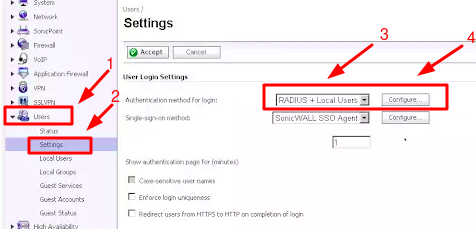
| RADIUS Server Timeout | Set to 30 seconds or higher. This is to make sure that login has enough time to receive the OTP and enter it. |
| Name or IP Address | IP of server where the Protectimus RADIUS Server component is installed. |
| Shared Secret | Indicate the shared secret you created in the Protectimus radius.yml file (radius.secret property) when configuring Protectimus RADIUS Server |
| Port Number | Indicate 1812 (or whichever port you configured in the Protectimus radius.yml file when configuring Protectimus RADIUS Server). |
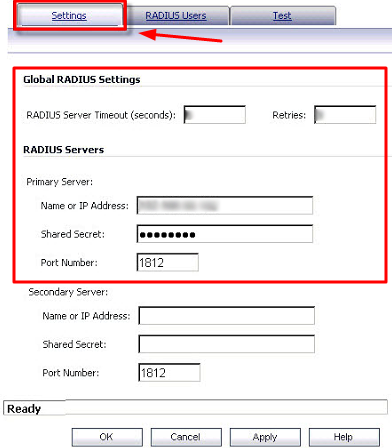
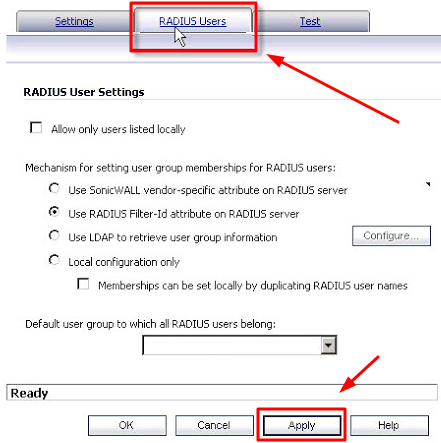
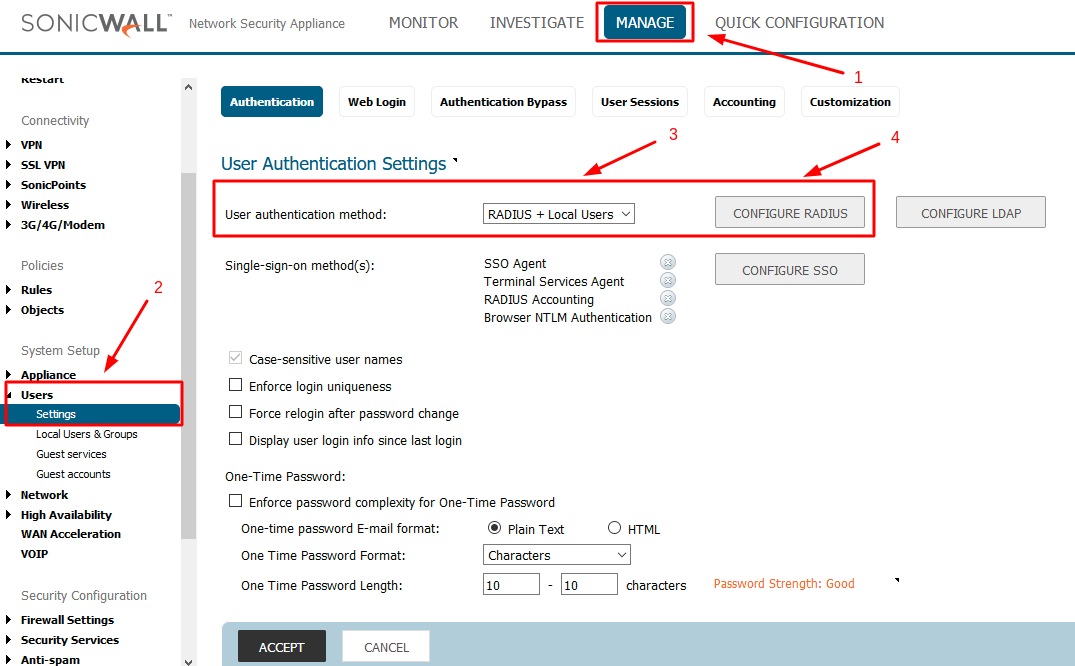
| Host Name or IP Address | IP of server where the Protectimus RADIUS Server component is installed. |
| Shared Secret | Indicate the shared secret you created in the Protectimus radius.yml file (radius.secret property) when configuring Protectimus RADIUS Server |
| Confirm Shared Secret | Confirm your shared secret. |
| Port | Indicate 1812 (or whichever port you configured in the Protectimus radius.yml file when configuring Protectimus RADIUS Server). |
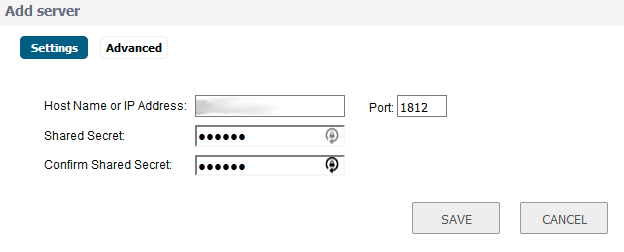
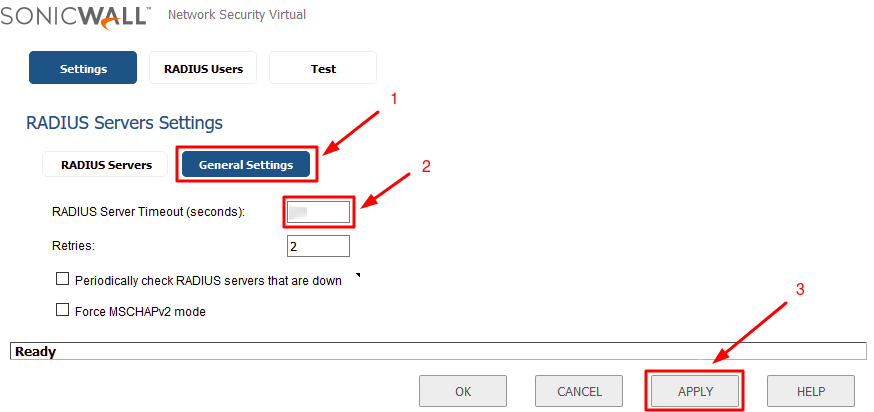
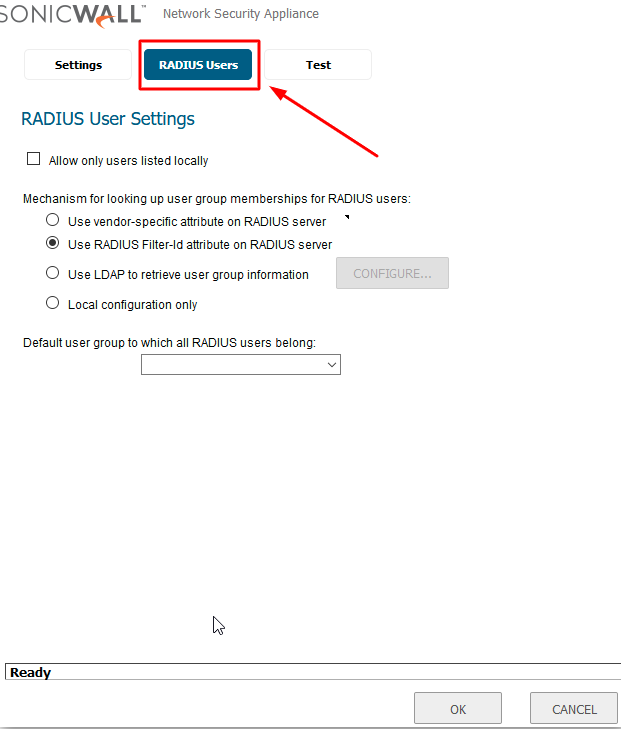
Integration of two-factor authentication (2FA/MFA) for your SonicWall VPN is now complete.
If you have other questions, contact Protectimus customer support service.
Protectimus Ltd
Carrick house, 49 Fitzwilliam Square,
Dublin D02 N578, Ireland
Ireland: +353 19 014 565
USA: +1 786 796 66 64
Protectimus Ltd
Carrick house, 49 Fitzwilliam Square,
Dublin D02 N578, Ireland
Ireland: +353 19 014 565
USA: +1 786 796 66 64


